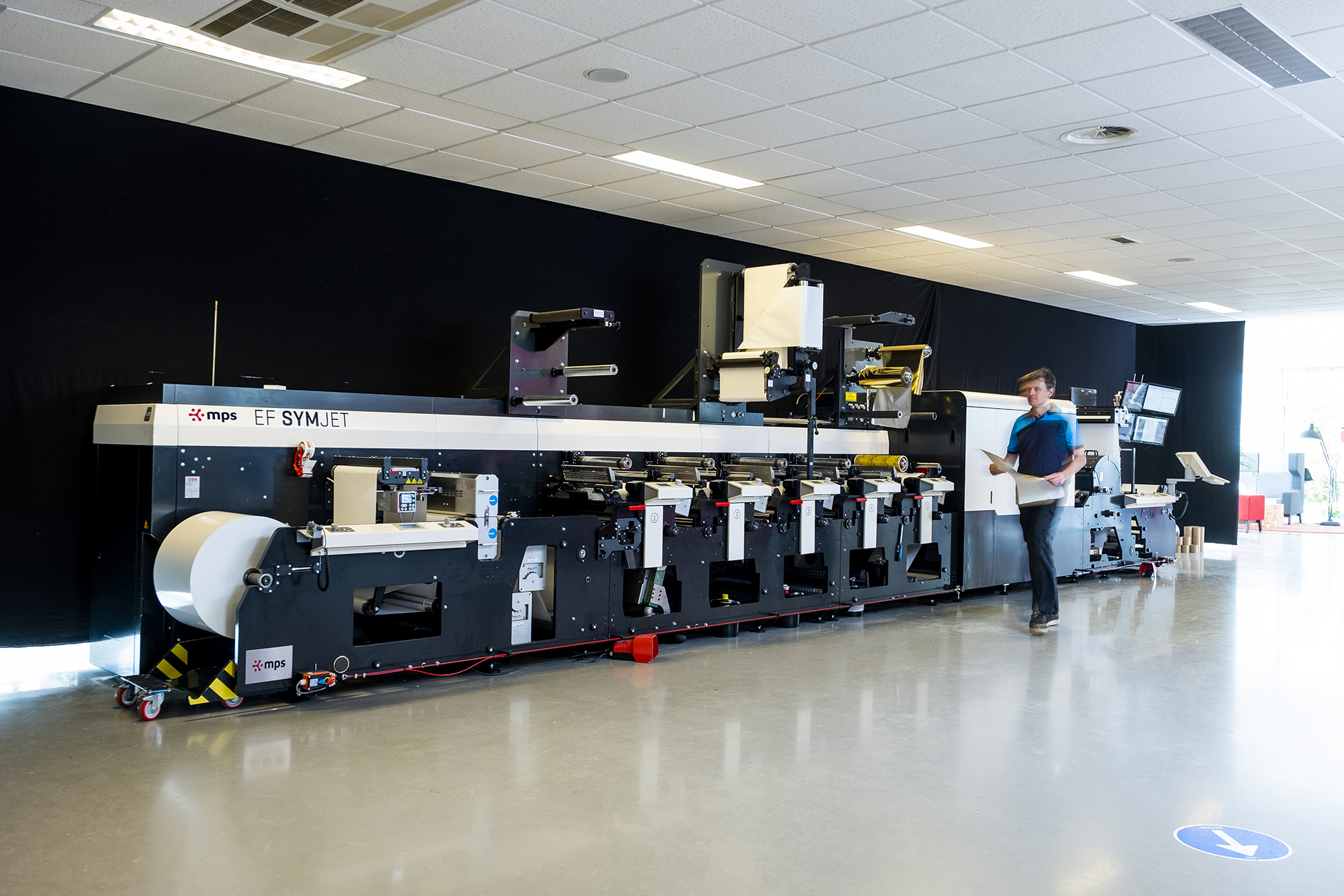This guest blog by Sean Skelly is based on the article published by Label & NarrowWeb
In the world of label printing presses, the word “hybrid” has taken on a life of its own. The term itself has been greatly overhyped and its meaning has been obscured by conveying different things to different folks. In fact, in some cases, it has been hijacked by certain equipment vendors to imply that they were the originators of the concept and essentially invented hybrid printing. This article will aim to inject a little bit of reality into “hybrid-mania” and help converters to better understand what it means, what it doesn’t mean and what they should do about it when making a printing system selection.
Understanding the Hype
So what exactly is all the excitement about hybrid printing? Is it really the best thing since sliced bread? Both analog and digital equipment vendors are working hard to associate themselves with the concept of hybrid printing, often creating extensive marketing campaigns to show how their “hybrid” is superior to others. Advertisements, white papers, webinars and other creative content aim to “prove” how their specific combination of analog and digital technology is best for solving converters’ manufacturing challenges by touting the many benefits of hybrid label presses: configuration flexibility, job printing optimization, seamless integration, best of breed components, world-class R&D partnerships, and more.
Over a decade ago, when inkjet was first emerging as an industrial label solution, this digital technology was used almost exclusively as an on-press VDP replacement for slower, off-line thermal transfer printers or less capable inline toner-based systems. Essentially, digital printing played a minor, although increasingly important, supporting role in the mass production of labels, complementing the true workhorses that did 99% of the work – analog presses.
All that changed when the first affordable, full-color digital presses debuted at major printing trade shows, such as Labelexpo, aiming to completely replace, not complement flexo presses. This shepherded in an era of digital printing “hyper-hype” – digital press equipment providers issued marketing materials that hinted that analog printing processes were essentially obsolete. There was a palpable fear among many flexo press manufacturers who were concerned that digital was an imminent threat to their entire business model and industry. Even the original digital label equipment providers, the dry and liquid toner players, were concerned that inkjet technology was a superior digital solution and allowed for higher speeds, improved print durability (especially UV inks), broader substrate support and lower operating costs when compared with click models.
Different starting points, same destination
Once it became obvious that digital printing was not an immediate existential threat to the entire industry of analog equipment manufacturers, its value was more clearly recognized in the form of hybrid solutions. In fact, it wasn’t long before hybrid printing presses with both analog and digital subsystems were created as the optimal way to leverage the strengths of both technologies.
Traditional flexo press manufacturers created their version of hybrid by incorporating digital print stations on existing analog printing presses, thus allowing for profitable short- and medium-run printing, versioning and variable data printing. On the other hand, digital label press manufacturers started with an inkjet or toner (digital) engine and then augmented that with various analog printing capabilities such as flexo stations for cost-effective white flood coating, priming or post-print varnishing. Other forms of non-digital technology were also included such as cold foil for decorative printing, jumbo roll support and conventional finishing (rotary or semi-rotary diecutting).
Ironically, even though traditional and digital press manufacturers had started out as competitive “archenemies,” their common “destination” ended up being a hybrid printing solution, the only difference being where their respective product development journeys had originated, either as an established flexo press adding digital options, or as a natively digital press incorporating proven analog components and capabilities.
Hybrid’s purpose
The primary reason that competing printing technologies exist in the first place is that each individual product is optimized to address part of the challenge, and its “competitor” technology is suited for a different part. For example, if you need to print one million duplicate beer labels in the most cost-effective way, your best bet has been, and still is, to use a flexo press. Alternatively, if a customer is a local microbrewery who only needs a few thousand brew-specific labels, then digital would be best as it wouldn’t incur the plate costs and lead time delays of flexo. Hybrid printing presses aim to be the best of both worlds, able to produce either job, as well as other complex labels that have both static information and VDP/versioning.
Note that just because a hybrid solution is an intermediate step on the journey to full technological replacement does not imply in any way that it is an inferior product. In fact, because it creatively brings together the best of the old and the new, it often delivers a highly reliable, proven platform integrated with a targeted set of advanced features.
Expect more hybrid in the future
Hybrid printing presses will by no means be the last time that converters will be faced with product solutions consisting of multiple technologies. For example, inkjet chemists are fighting physics as they work feverishly to develop label and packaging inks that combine the best capabilities of both water-based and UV inks. Water-based inks are less costly to formulate, are more eco-friendly and avoid the pesky problem of migrating through packaging, to name just a few features. UV inks, on the other hand, offer excellent scratch resistance, powerful substrate adhesion and highly reliable nozzle firing. Hybrid inks that combine these positive features without inheriting any technology limitations reinforce the main goal of hybrid development: functionality without compromise.
What does hybrid mean for converters?
For converters already trying to plan and rationalize their capital equipment strategy, the hype over hybrid printing can make an uncertain business decision process even more murky. Just when converters thought they had narrowed their printing press choices down to analog or digital, they end up with a new set of options that are supposed to be the best of both technologies. How should they make sense of this?
Here are some ideas:
Define hybrid printing for yourself
Actively engage your team and explicitly define the term so everyone has a common understanding of what hybrid printing specifically means to the business. This clarity will eliminate the confusion caused by external hype and lay the foundation for aligning the organization.
Refine your roadmap
Revisit your roadmap to make sure hybrid printing is putting you on a path to adopting digital in a timeframe that is aligned with your own company’s objectives. This roadmap is invaluable in documenting the capabilities needed to serve your customers, whether they be Fortune 50 consumer product goods behemoths, or local microbrews.
Look beyond the technology
Remember that technology is only a small part of the impact of implementing hybrid printing presses. Converters will have to deal with major implications throughout the business, including for its employees (e.g., training, sales incentives), processes (e.g., workflow), and customer expectations (e.g., turnaround time, pricing).
Test your supplier assumptions
Treat hybrid printing presses as new products and conduct in-depth supplier due diligence, even when working with a longstanding, preferred vendor. The expertise required to create a world-class hybrid printing press involves both analog and digital core competencies, and manufacturers are not natively expert in both; flexo firms are not inkjet experts and inkjet firms are not flexo experts. Rather, they partner with (or acquire) R&D firms to integrate the technology that is “new” to them. Examine the supply chain to make sure key participants are vetted and scrutinize the engineering processes that make up the integration process. Excellence in execution will ultimately determine the best hybrid solutions.
Embrace hybrid
Look beyond the hype and embrace the reality of hybrid solutions as a way to grow your business through new applications and opportunities. Avoid the trap of waiting for the day when digital completely replaces analog. If you wait, you will be at a severe competitive disadvantage to converters who were more proactive with investing in hybrid printing presses. Take inventory of what product configurations are available from top vendors and let their hybrid product development plans help you in pacing your own adoption.
Summary
Hype aside, hybrid printing is a critically important product solution for converters. Although there will always be a bombardment of marketing mania making it difficult to determine its true value, this article has highlighted the reality of the situation: that hybrid printing solutions are more than marketing gimmicks. They are a necessary and natural part of a complex system of product development cycles, and they can play a very constructive role for converters navigating their own journey to the future of a wholly or partially digital world.
About the author: